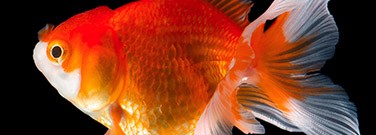How Well Can Fish Tell Direction?

By Iva Fedorka
Can a fish drive a car? Some scientists designed an experiment to find out if fish could navigate a vehicle!
Animal Driving Studies
Conducted by researchers at Ben-Gurion University of the Negev in Beer-Sheva (Israel), the study was based on the concept of domain transfer: one species is placed into another one’s environment and expected to perform a specific and somewhat familiar task. The study was led by neuroscientist Ronen Segev and co-author Ohad Ben-Shahar, a computer scientist and neuroscience researcher.
Kelly Lambert and her colleagues at the University of Richmond (Virginia) have already taught rats to operate vehicles made from plastic containers, using cereal treats as rewards. But the fish behavior takes animal driving experiments even further.
Driving Lessons
First, they created a Fish Operated Vehicle (FOV) that consisted of a shallow tank of water placed on a motorized wheeled platform. The FOV also had a camera that tracked the fish’s location and movement and sent a streaming video signal to a PC.
Six goldfish (Carassius auratus) were evaluated to see whether they could use the FOV to change their position in the space. When they actively moved toward one of the tank walls, the FOV would move in that direction.
The Destination
Once it was shown that the fish could move the vehicle, they were then given a visual target (a pink board) where a food reward was waiting. The fish improved their “driving” with practice and were not fooled by decoys, dead-ends, and other distractions.
By the end of the trial, several had figured out the fastest and most direct route to the target and reached it from various locations in the space. This confirmed that the fish had not just memorized the routes but actively planned each journey.
Conclusions
Most animals must be able to successfully move around to forage for food, find shelter or a mate, and otherwise survive. Specific navigation skills, like space representation, differ by species, brain structure, ecological system, and other general and universal conditions.
The fish in the study were able to transfer their space representation and navigation skills to a new and different environment, which may indicate that they possess these universal species-independent abilities.
We are likely to hear more about animal driving experiments as researchers expand and diversify to more species and new tasks. Is an interspecies race in the future?
Discussion Questions
- Which animal would you suggest for the next driving study? Why?
- Design a vehicle and driving controls that could be used by that animal.